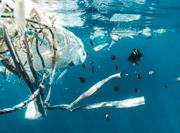How to make ice last way longer in your cooler
- Replies 0
Coolers are supposed to keep things cold, but even the best ones fail if you start off on the wrong foot. A simple oversight is making coolers lose their chill faster than they should.
As temperatures rise and outdoor plans ramp up, many people unknowingly set themselves up for soggy sandwiches and lukewarm drinks.
Fortunately, fixing it doesn’t cost much—and it’s backed by both real-world testing and cooler brands themselves.
Most people store their coolers in warm places like garages or patios, which causes the insulation to retain heat long after it’s moved indoors.
When you load ice into a warm cooler, that first batch gets used up cooling down the interior instead of chilling your food and drinks.
That means your cooler starts off behind, and the ice melts faster throughout the day. Even insulated models can’t overcome this if the interior starts hot.
The fix is straightforward: pre-chill your cooler by placing a bag of ice inside it 24 hours before use. This “sacrificial” batch cools the insulation and internal air so your fresh ice doesn't have to fight the heat.
Cooler brands like YETI, Igloo, and Lifetime all support this method, and testing shows it works. “Let some ice sit in the cooler for at least 24 hours!!!” Online user @anna_truth wrote, adding, “It will make your ice LAST SO MUCH LONGER.”
To pre-chill effectively, bring the cooler inside to a room-temperature space and fill it with a cheap bag of ice or frozen gel packs.
Let it sit closed for 12–24 hours, then drain the water and leftover ice just before packing it for your trip.
When you add new ice and already-chilled items, the cooler will retain cold far more efficiently. It’s a simple step that can significantly extend cooling time for very little effort or cost.
Real-world testing shows the pre-chill trick has a much bigger impact on hard-sided coolers than soft-sided ones.
In tests, a basic soft cooler bag showed no real improvement, with ice melting in about 8 hours regardless.
An Igloo hard cooler usually lost all ice in 22 hours, but with pre-chilling, it lasted 30 hours. In a YETI hard cooler, pre-chilling pushed ice retention from about 60–72 hours to a full 82 hours.
These results show that while not all coolers benefit equally, the difference can be dramatic in high-quality models.
An extra 8–22 hours of cold can mean the difference between safe food and waste, especially during long outdoor trips. Cooler insulation only works properly when it starts off cold, not warm. It’s a small prep step that pays off with extended performance in nearly every condition.
To take things further, pack your cooler with pre-chilled food and drinks so the ice isn’t doing double duty. Keep it packed tightly, ideally two-thirds ice and one-third contents, and avoid unnecessary air gaps that speed up melting.
Whenever possible, place the cooler in shade or drape it with a towel or tarp to keep the sun off it. And remember, melted ice water actually helps preserve the remaining ice—so keep it unless you’re storing unpackaged food.
Reusable cold packs or frozen water bottles are a smart substitute for the sacrificial ice bag and can be reused throughout the summer.
They’re especially handy if you want to avoid wasting money on ice during pre-chilling. Just make sure you remove them before packing fresh ice and supplies for your outing. Minimizing how often you open the lid is another overlooked way to preserve cold air longer.
Soft-sided coolers can still benefit slightly from pre-chilling, though the results are far less dramatic than with hard-shell models.
Placing them in a fridge or freezer before packing may help keep items cold a little longer, especially for quick trips.
The same rule applies: pack already-cold items and minimize air space. Just don’t expect overnight cold retention from models that aren’t built for it.
If you're using your cooler for a short picnic or a day at the park, even a few extra hours of cold can make a big difference.
Proper packing and strategic chilling can stretch the performance of even mid-range coolers. And for longer adventures, the extra prep can prevent spoiled food, wasted drinks, and a disappointing mess at the bottom of your cooler. With summer in full swing, now’s the time to make these easy changes before your next trip.
Read next:

Have you ever pre-chilled your cooler before a trip? What tricks do you swear by to keep things cold all day? Share your tips, test results, or cooler hacks in the comments—we’d love to hear how you keep the chill going strong.
As temperatures rise and outdoor plans ramp up, many people unknowingly set themselves up for soggy sandwiches and lukewarm drinks.
Fortunately, fixing it doesn’t cost much—and it’s backed by both real-world testing and cooler brands themselves.
Most people store their coolers in warm places like garages or patios, which causes the insulation to retain heat long after it’s moved indoors.
When you load ice into a warm cooler, that first batch gets used up cooling down the interior instead of chilling your food and drinks.
That means your cooler starts off behind, and the ice melts faster throughout the day. Even insulated models can’t overcome this if the interior starts hot.
The fix is straightforward: pre-chill your cooler by placing a bag of ice inside it 24 hours before use. This “sacrificial” batch cools the insulation and internal air so your fresh ice doesn't have to fight the heat.
Cooler brands like YETI, Igloo, and Lifetime all support this method, and testing shows it works. “Let some ice sit in the cooler for at least 24 hours!!!” Online user @anna_truth wrote, adding, “It will make your ice LAST SO MUCH LONGER.”
To pre-chill effectively, bring the cooler inside to a room-temperature space and fill it with a cheap bag of ice or frozen gel packs.
Let it sit closed for 12–24 hours, then drain the water and leftover ice just before packing it for your trip.
When you add new ice and already-chilled items, the cooler will retain cold far more efficiently. It’s a simple step that can significantly extend cooling time for very little effort or cost.
Real-world testing shows the pre-chill trick has a much bigger impact on hard-sided coolers than soft-sided ones.
In tests, a basic soft cooler bag showed no real improvement, with ice melting in about 8 hours regardless.
An Igloo hard cooler usually lost all ice in 22 hours, but with pre-chilling, it lasted 30 hours. In a YETI hard cooler, pre-chilling pushed ice retention from about 60–72 hours to a full 82 hours.
These results show that while not all coolers benefit equally, the difference can be dramatic in high-quality models.
An extra 8–22 hours of cold can mean the difference between safe food and waste, especially during long outdoor trips. Cooler insulation only works properly when it starts off cold, not warm. It’s a small prep step that pays off with extended performance in nearly every condition.
To take things further, pack your cooler with pre-chilled food and drinks so the ice isn’t doing double duty. Keep it packed tightly, ideally two-thirds ice and one-third contents, and avoid unnecessary air gaps that speed up melting.
Whenever possible, place the cooler in shade or drape it with a towel or tarp to keep the sun off it. And remember, melted ice water actually helps preserve the remaining ice—so keep it unless you’re storing unpackaged food.
Reusable cold packs or frozen water bottles are a smart substitute for the sacrificial ice bag and can be reused throughout the summer.
They’re especially handy if you want to avoid wasting money on ice during pre-chilling. Just make sure you remove them before packing fresh ice and supplies for your outing. Minimizing how often you open the lid is another overlooked way to preserve cold air longer.
Soft-sided coolers can still benefit slightly from pre-chilling, though the results are far less dramatic than with hard-shell models.
Placing them in a fridge or freezer before packing may help keep items cold a little longer, especially for quick trips.
The same rule applies: pack already-cold items and minimize air space. Just don’t expect overnight cold retention from models that aren’t built for it.
If you're using your cooler for a short picnic or a day at the park, even a few extra hours of cold can make a big difference.
Proper packing and strategic chilling can stretch the performance of even mid-range coolers. And for longer adventures, the extra prep can prevent spoiled food, wasted drinks, and a disappointing mess at the bottom of your cooler. With summer in full swing, now’s the time to make these easy changes before your next trip.
Read next:
- This simple fan trick could cool your home faster and lower your electric bill
- Is your cooler safe? Discover the chilling reason this popular brand recalled over a million coolers
Key Takeaways
- Pre-chilling your cooler for 12–24 hours with ice significantly boosts ice retention, especially in hard coolers like Igloo and YETI.
- A test showed ice lasted 8 hours longer in an Igloo and 10–22 hours longer in a YETI after pre-chilling.
- Use already-cold food and drinks, fill the cooler two-thirds with ice, and store it in the shade to
- Soft-sided coolers benefit less from pre-chilling but may still perform better during short outings if properly chilled ahead of time.







